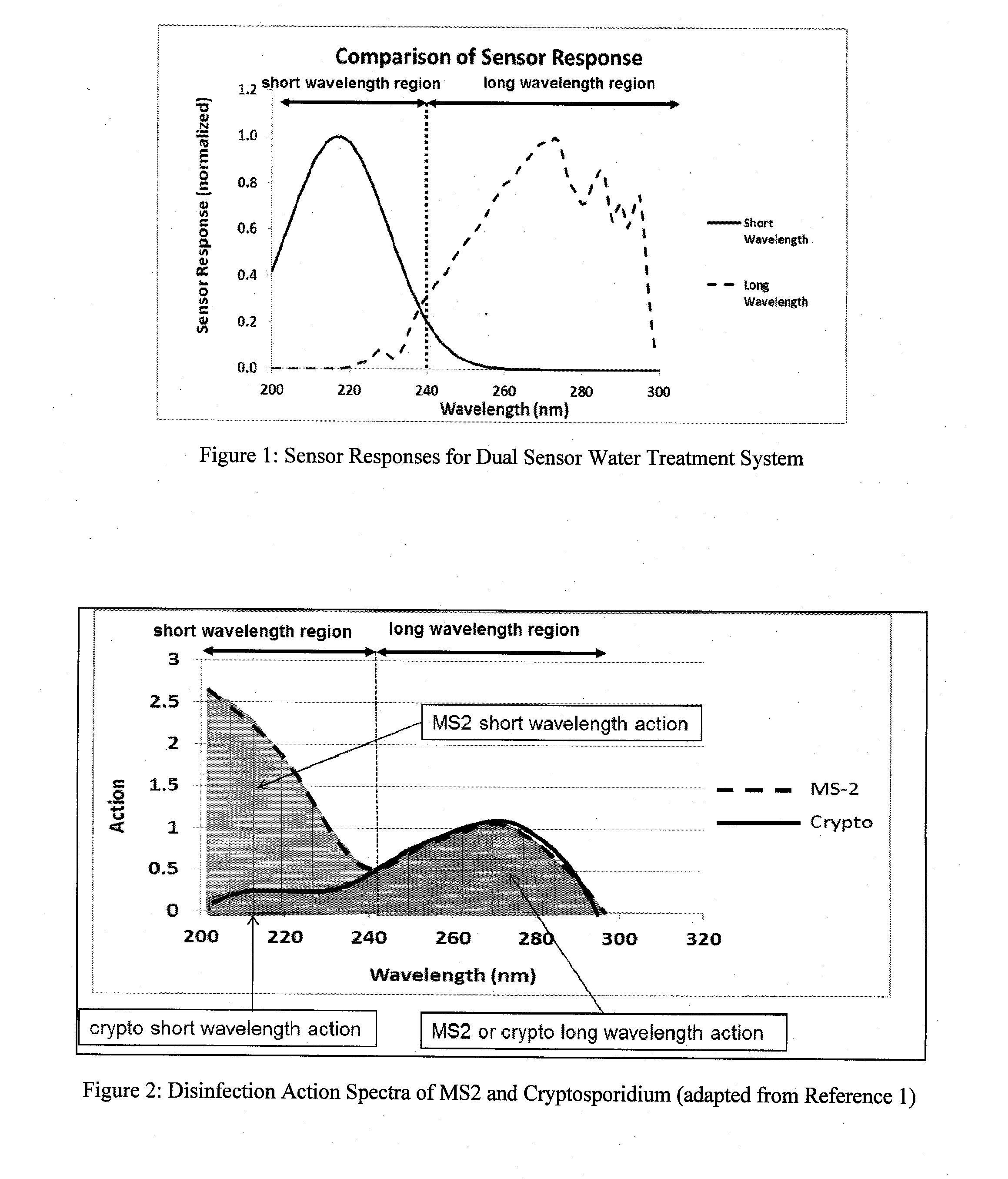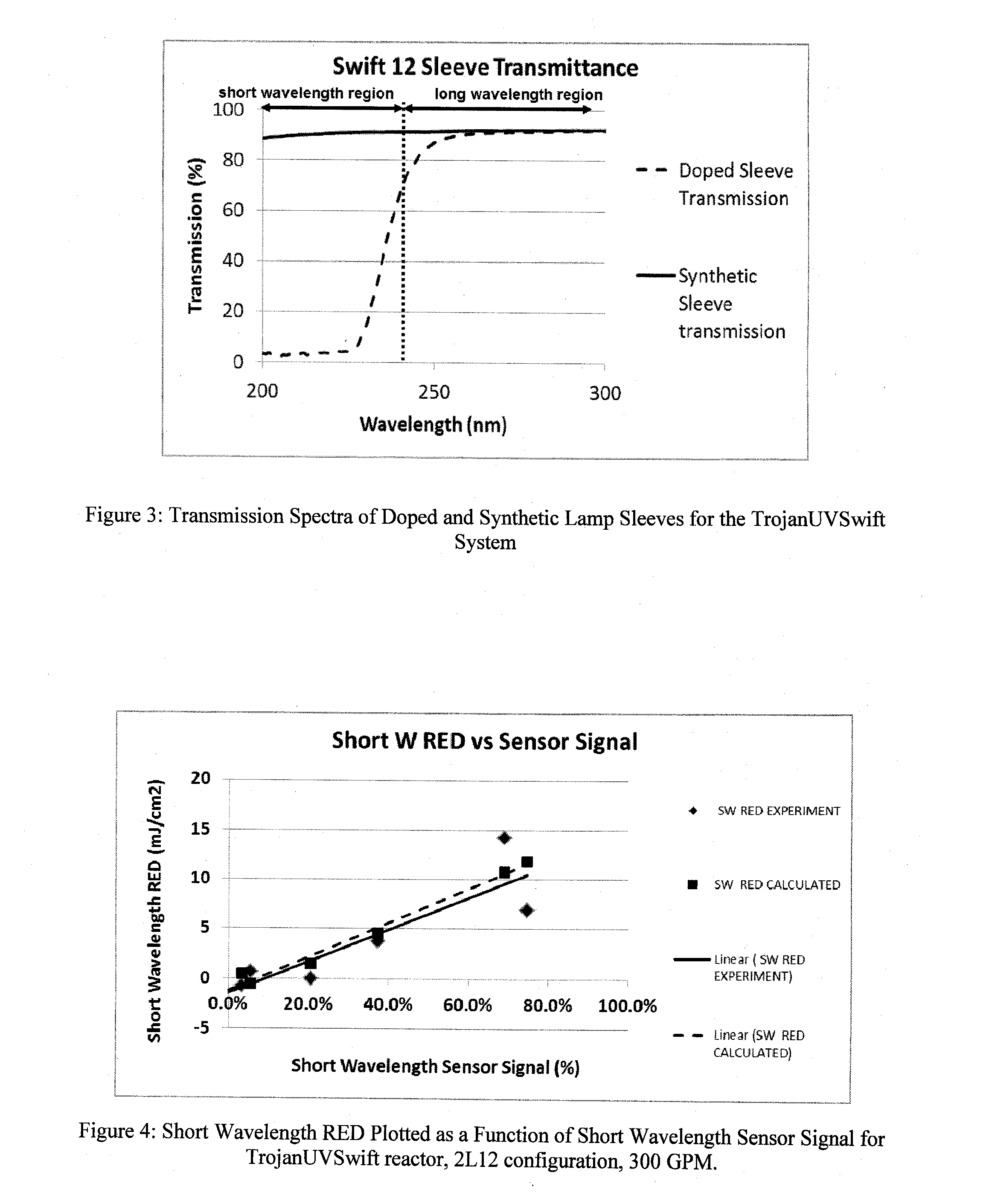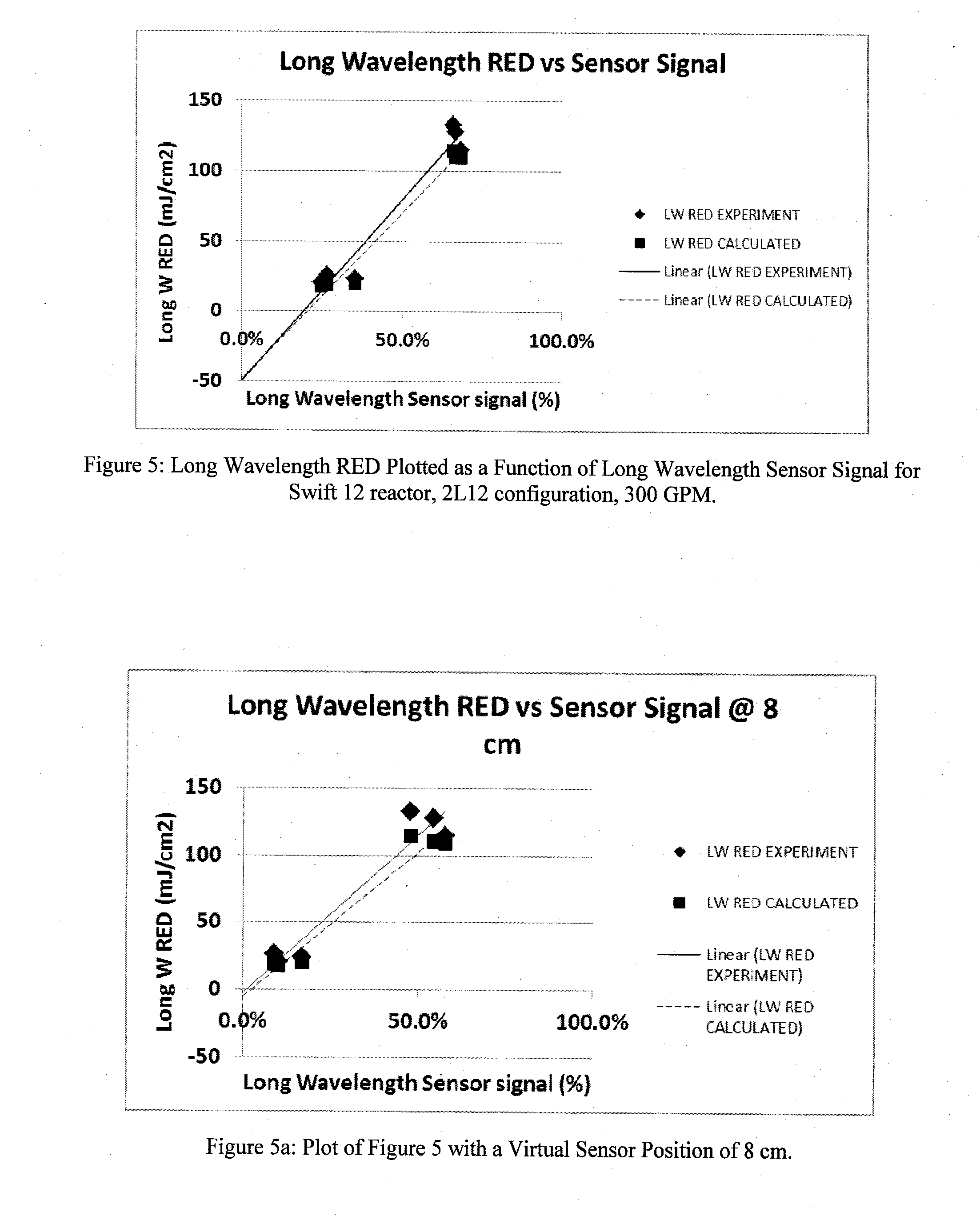System for determining UV dose in a reactor system
a reactor system and uv dose technology, applied in water treatment parameters control, specific water treatment objectives, water/sludge/sewage treatment, etc., can solve the problems of difficult access, relatively high capital cost of the reactor, and manifested problems, so as to reduce the amount of short wavelength radiation and accurate red value , the effect of reducing the amount of short wavelength uv produced
- Summary
- Abstract
- Description
- Claims
- Application Information
AI Technical Summary
Benefits of technology
Problems solved by technology
Method used
Image
Examples
Embodiment Construction
[0066]The present invention relates to a process for determining a validated Reduction Equivalent Dose for reducing the concentration of a target contaminant contained in a fluid in a radiation fluid treatment system, the process comprising the steps of: (a) determining a short wavelength Reduction Equivalent Dose for the target contaminant or a challenge contaminant in a first region of the electromagnetic spectrum having a wavelength of less than or equal to about 240 nm; (b) determining a long wavelength Reduction Equivalent Dose for the target contaminant or a challenge contaminant in a second region of the electromagnetic spectrum having a wavelength of greater than about 240 nm; and (c) summing the short wavelength Reduction Equivalent Dose and the long wavelength Reduction Equivalent Dose to produce the validated Reduction Equivalent Dose for the target contaminant. Preferred embodiments of this process may include any one or a combination of any two or more of any of the fol...
PUM
 Login to View More
Login to View More Abstract
Description
Claims
Application Information
 Login to View More
Login to View More - R&D
- Intellectual Property
- Life Sciences
- Materials
- Tech Scout
- Unparalleled Data Quality
- Higher Quality Content
- 60% Fewer Hallucinations
Browse by: Latest US Patents, China's latest patents, Technical Efficacy Thesaurus, Application Domain, Technology Topic, Popular Technical Reports.
© 2025 PatSnap. All rights reserved.Legal|Privacy policy|Modern Slavery Act Transparency Statement|Sitemap|About US| Contact US: help@patsnap.com



